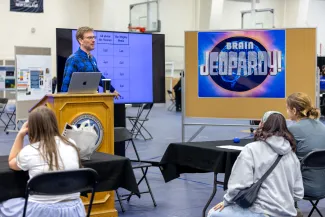
From exhibits featuring cow eyes and sheep brains to games like cornhole, the free event welcomed the public.
An old wooden stereo speaker affixed to trays covered with salt helped Brooklynn Merrill (Neuroscience, ’24) demonstrate to local youth at the University of New England’s Brain, Body, and Wellness Fair how sound waves work.
But the exhibit that offered a visual representation of how sound waves at different frequencies move — one of 30 such booths at the April 4 fair held at the Harold Alfond Forum in Biddeford – wasn’t just for kids, Merrill said.
“It’s really great seeing kids excited to learn about science, especially with kids learning through their senses: their touch, and feel, and hearing. It helps show them that there are different ways to perceive and learn things. But even for adults, it can help unlock their inner child,” said Merrill, a lab technician at UNE.
Merrill was among dozens of UNE students, staff, and faculty who came together at UNE’s eighth Brain Fair to offer games, demonstrations, and lessons that explained the function and limitations of the brain. The fair was free and open to the public to encourage more people to engage in science alongside the UNE community.

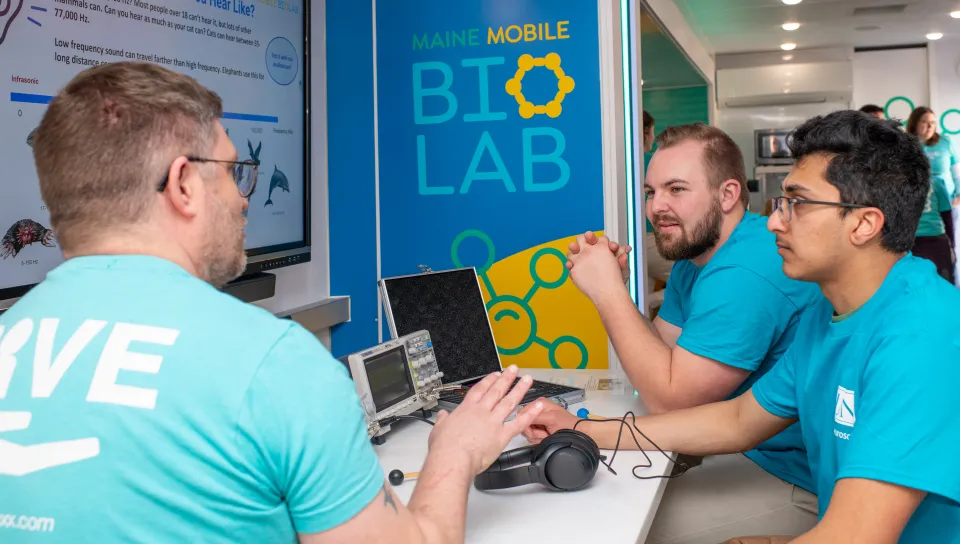
The Center for Excellence in Neuroscience, which started the fair in 2014, was joined by other UNE departments, such as Psychology, Physical Therapy, Athletic Training, and Occupational Therapy.
The Brain Fair also included outside organizations, such as the Michael Goulet Foundation, which advocates for improved treatment of seizure disorders and brain injuries, and Educate Maine, a nonprofit that helps prepare Maine students for postsecondary learning.
“People tend to think about science as so complicated and difficult, and it is. But it can also be fun, and we need to make it fun, for all levels,” said Luis Queme, M.D., Ph.D., assistant professor in the Department of Biomedical Sciences, who ran an exercise that explained the phantom pain that amputees experience.
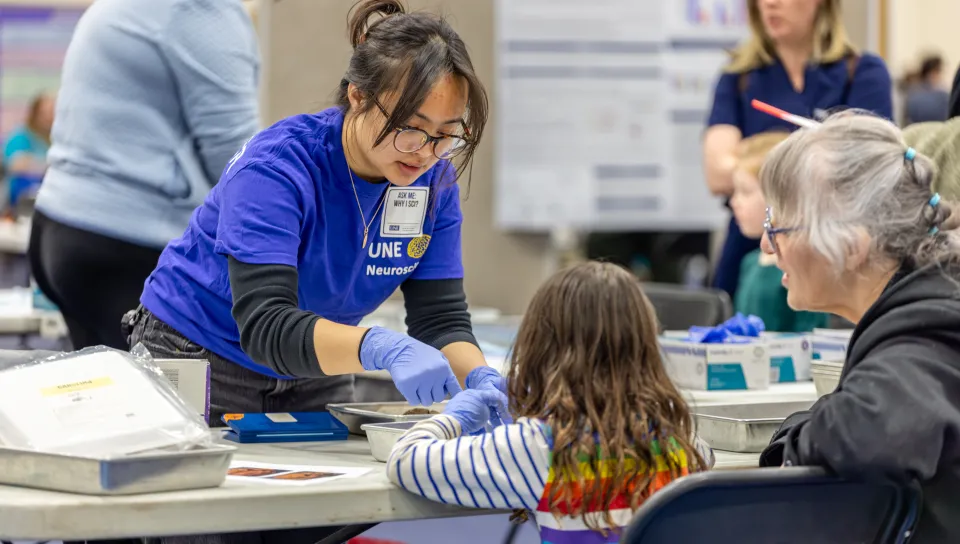

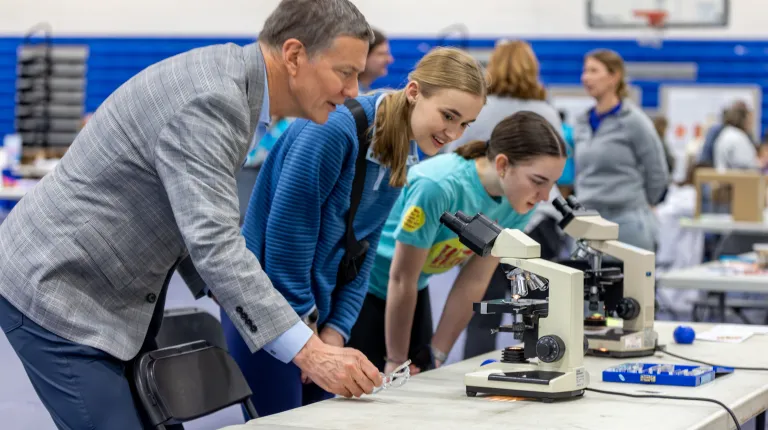

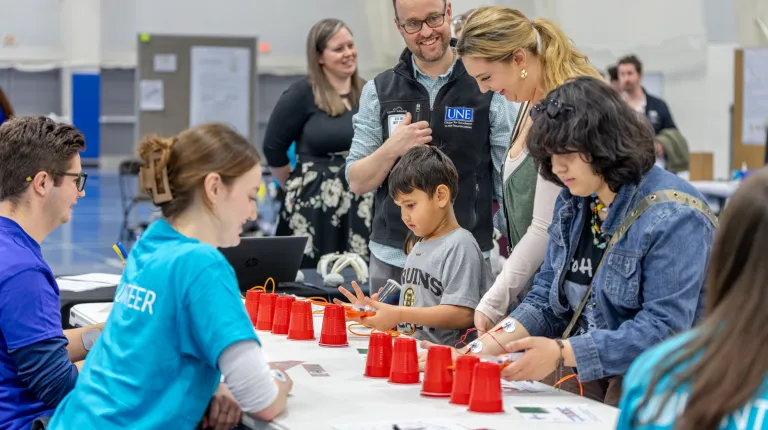
Jennie Dapice, Ph.D., OTR/L, PCP, a UNE assistant professor of occupational therapy, directed a cornhole station that offered more than a classic Yankee backyard game. For the many adults and children who stepped up to try their hand at sinking the beanbags in the hole, Dapice provided them with altered goggles that caused the kind of distorted vision experienced by one who has been concussed.
Meanwhile, further back in the Alfond gym, behind curtains, students in the College of Osteopathic Medicine shared samples of brains from the UNE donor lab, where organs have been donated to help further science.
“The reaction at seeing a brain is split between scared and very interested,” said Julia Baracewicz, a second-year medical school student. “The younger children tend to move in very close to get a good look, which is great. This helps the public learn more about how the brain and body works.”
Outside the tented-off area, Tyler Redway, Ph.D., assistant professor in the Department of Biomedical Sciences in the medical school, controlled the flow of visitors and explained what they would see, such as a brain that showed signs of Alzheimer's and another that showed signs of meningitis, which is the inflammation of the brain’s protective membrane.
Elsewhere, a generous display of animal brains showed an array of shapes and sizes in different species. With all the enthusiasm one would get at a county-fair booth, Jared Zuke, research associate in UNE’s Behavior Core, explained how in size and function, a rat brain is similar to a human brain in many ways.
“Rats are pretty smart. Their brains are proportionally very similar to a human’s in many functions.” Zuke said. “And they have a lot of the same structures, like a cerebellum and brain stem. Not all (animal) brains have these same features.”
Read press coverage in Saco Bay News (April 9, 2025).